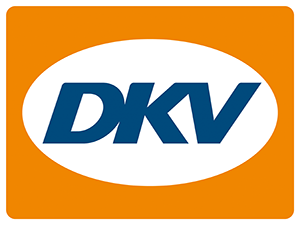'Lead in Green' - how DKV Mobility makes sustainability a shared responsibility

Sustainability is no longer a “nice-to-have” - it is an essential part of corporate responsibility and the strategic orientation of every company. DKV Mobility goes even further when it comes to sustainability: under the motto “Lead in Green”, the company is pursuing a clear goal - to actively shape the mobility transition and combine ecological, social and corporate responsibility. “Lead in Green is not just a slogan for us,” says Laura Cremer-Heesen, Director Sustainability. “It is a clear stance that underlines our ambitions and can be felt in all areas of the company.”
The company's current Sustainability Report 2024 shows that this responsibility is being put into practice:
- DKV Mobility offers its customers access to around 893,000 EV charge points in Europe - an increase of around 41% compared to the previous year
- The number of charge cards in circulation for electric vehicles has increased to around 798,000 - an increase of around 35%
- The network for alternative fuels has expanded to around 24,000 stations - an increase of 13%
- The share of renewable energies (electricity and gas) at company locations has risen from 54% to 59% compared to the previous year
- DKV Mobility has achieved top rankings in renowned ESG ratings - including from EcoVadis, Sustainalytics and CDP
But what does the path behind these figures look like - and what's next? Laura Cremer-Heesen, Director Sustainability at DKV Mobility, provides insights into the successes to date, the challenges - and the motivation behind the sustainable change.
Newsroom: Laura, what does sustainability mean for DKV Mobility?
Laura: Our sustainability journey is closely linked to our corporate purpose “To drive the transition towards an efficient and sustainable future of mobility” and our corporate strategy. The guiding principle “Lead in Green” is not just a slogan, but a real promise. We are continuously improving and professionalizing our processes, promoting diversity and actively engaging with the local communities in which we operate. At the same time, we support our customers with sustainable products and services in the mobility transition - for example with alternative fuels, e-mobility solutions or digital tools such as our Carbon Monitor, which helps companies to reliably analyze and document their fleet emissions.
Newsroom: That sounds like a holistic approach. How is this reflected in your day-to-day work?
Laura: Sustainability is firmly anchored in our daily tasks, i.e. also in our core business. We have developed a cross-company sustainability strategy with clear objectives that everyone is responsible for implementing in their day-to-day work - whether in the fuel & vehicle Service area, in electromobility or in the toll departments. And of course this is not always easy. For example, when new responsibilities suddenly arise in departments and new products and services are developed, discussions are initially necessary to create clarity, define goals and sound out responsibilities. But it is precisely these exchanges that ensure sustainability does not just exist on paper but is lived.
Newsroom: That sounds like real teamwork!
Laura: Absolutely. The key is that everyone pulls together: only if we as a team critically question existing processes, contribute our own ideas and support change will the company as a whole become more sustainable - and we can only do that together.
Newsroom: Your ambitious climate targets are an important element of your strategy. What specific targets have you set yourselves?
Laura: Our ambition is clear: we want to help shape the mobility revolution. To live up to our claim, we defined new ambitious climate targets last year that are scientifically sound. The targets were validated by the internationally recognized Science Based Targets initiative (SBTi) and are based on the 1.5-degree path of the Paris Climate Agreement.
In concrete terms, this means we want to reduce our emissions by 42% by 2030 compared to the base year 2022. And by 2050 at the latest, we are aiming for net-zero emissions across our entire value chain.
Newsroom: You have already achieved a lot - but what are the next milestones on your journey?
Laura: Our aim is to support our customers even more in the mobility transition - especially in the switch to more sustainable mobility solutions. Many of our customers have set themselves ambitious decarbonization targets and we see ourselves as a partner for fleet-related emissions: we help them translate their transactions into CO2 emissions, identify potential, make their mobility more efficient and, by doing so, also avoid or reduce CO2 emissions.
At the same time, we are already thinking ahead: we want to specifically develop new digital solutions that combine sustainability and innovation. Based on our climate targets and a clear roadmap to net zero by 2050, we are accelerating change - together with our customers, our partners and our employees. We are all pursuing the same goal - and on the path to greater sustainability, it is not the speed that counts, but the direction, continuity and cooperation.
Newsroom: Thank you for the exciting insights, Laura!
Sustainability is not a project at DKV Mobility - it's a continuous process. One that only works if everyone is on board. Or as Laura Cremer-Heesen puts it: “A strong sustainability strategy doesn't just live from ambitious goals - but from the people who implement them together.”
You can read the full sustainability report here.
